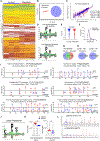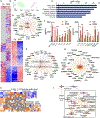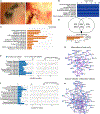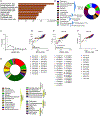Role of the afferent lymph as an immunological conduit to analyze tissue antigenic and inflammatory load
- PMID: 38848214
- PMCID: PMC11233987
- DOI: 10.1016/j.celrep.2024.114311
Role of the afferent lymph as an immunological conduit to analyze tissue antigenic and inflammatory load
Abstract
The lymphatic fluid is the conduit by which part of the tissue "omics" is transported to the draining lymph node for immunosurveillance. Following cannulation of the pre-nodal cervical and mesenteric afferent lymphatics, herein we investigate the lymph proteomic composition, uncovering that its composition varies according to the tissue of origin. Tissue specificity is also reflected in the dendritic cell-major histocompatibility complex class II-eluted immunopeptidome harvested from the cervical and mesenteric nodes. Following inflammatory disruption of the gut barrier, the lymph antigenic and inflammatory loads are analyzed in both mice and subjects with inflammatory bowel diseases. Gastrointestinal tissue damage reflects the lymph inflammatory and damage-associated molecular pattern signatures, microbiome-derived by-products, and immunomodulatory molecules, including metabolites of the gut-brain axis, mapped in the afferent mesenteric lymph. Our data point to the relevance of the lymphatic fluid to probe the tissue-specific antigenic and inflammatory load transported to the draining lymph node for immunosurveillance.
Keywords: CP: Immunology; Crohn's disease; MHC immunopeptidome; MHC molecules; antigen presentation; antigen processing; immunosurveillance; inflammation; lymph; lymphatics.
Copyright © 2024 The Author(s). Published by Elsevier Inc. All rights reserved.
Conflict of interest statement
Declaration of interests The authors declare that they do not have any conflict of interest.
Figures







References
Publication types
MeSH terms
Substances
Grants and funding
- R01 AI079178/AI/NIAID NIH HHS/United States
- R21 AR081493/AR/NIAMS NIH HHS/United States
- R01 AI170897/AI/NIAID NIH HHS/United States
- R01 AI153828/AI/NIAID NIH HHS/United States
- R01 AI143976/AI/NIAID NIH HHS/United States
- R01 AI146180/AI/NIAID NIH HHS/United States
- R01 AI137198/AI/NIAID NIH HHS/United States
- R01 AG067581/AG/NIA NIH HHS/United States
- P50 AR080593/AR/NIAMS NIH HHS/United States
- R01 AI127869/AI/NIAID NIH HHS/United States
- R01 AI169723/AI/NIAID NIH HHS/United States
- R01 AT011419/AT/NCCIH NIH HHS/United States
- R01 AI134696/AI/NIAID NIH HHS/United States
- P01 AG031782/AG/NIA NIH HHS/United States
LinkOut - more resources
Full Text Sources
Molecular Biology Databases
Research Materials
Miscellaneous

